#credit : ultraviolence(coloring)
Explore tagged Tumblr posts
Text






Jang Ki Yong (avatars 400x640)
#jang ki yong#jang ji yong avatars#avatars#avatars rpg#avatars rpg ressources#400x640#avatars ressources rpg#credit : skatevibes and ultraviolence (coloring)#credit : andthereisawoman (textures + typo)
29 notes
·
View notes
Text






Shin Se Kyung (avatars 400x640)
#Shin se kyung#shin se kyung#shin se kyung avatars#avatars#avatars rpg#400x640#request#credit : andthereisawoman(texture)#credit : ultraviolence(coloring)#credit : skatevibetm(coloring
15 notes
·
View notes
Text
the beauty of ardra 💧🌑

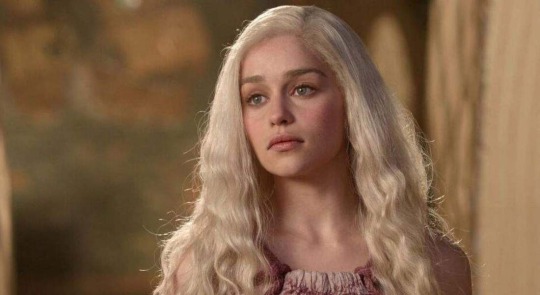
💧margot robbie (ardra surya): upper photo
💧emilia clarke (ardra chandra): lower photo
🌑 the nakshatras of the nodes have a very distinctive appearance. the influence of the feminine rahu bestows ardra natives with the typical feminine features, such as delicate facial features, larger eyes, and a voluptuous body. the yin features of rahu gives natives a type of otherworldly and ethereal appearance, similar to that of saturn. this is because both planets are of the air element (for a better understanding of this go to my pushya nakshatra post). these natives typically have large and rounded eyes, dainty noses, and a lighter complexion (depending on the native’s ethnicity, i.e. if a rahuvian woman is of a darker complexion, she may have a slightly lighter complexion than her other non-rahuvian family members).
⭕️ let’s look at rahu’s most evolved state: the shatabisha nakshatra. this nakshatra is symbolized by the empty, yin circle. shatabisha is ruled by varuna, god of the rains, cosmic and terrestrial waters, sky and earth. in addition to the mystical healer, maya (illusion). the nature of shatabisha is also abundant in the other rahu-ruled vimshottari nakshatras (ardra and swati). this is because rahu is the utmost manifestation of the divine feminine. maya, being the embodiment of illusion, betows rahuvian individuals with the power of being an empty vessel for the divine collective; bending reality and transforming into the desires of others the native deems worthy. however, due to rahu’s rebellious nature, we see this powerful feminine force being steadfast and not easily influenced by others.
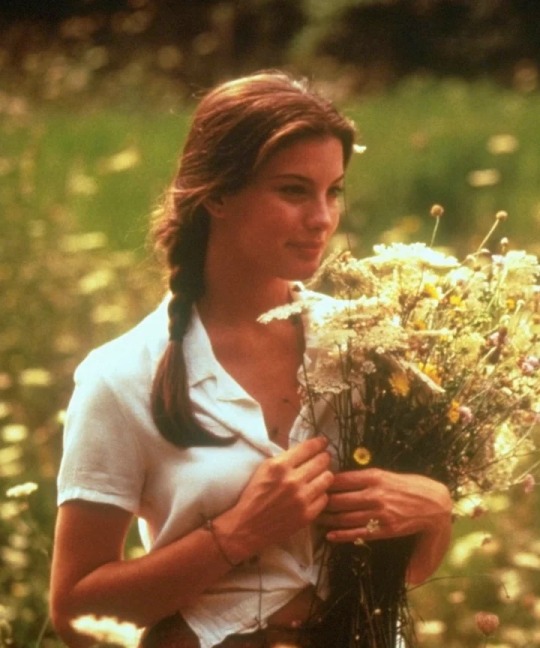
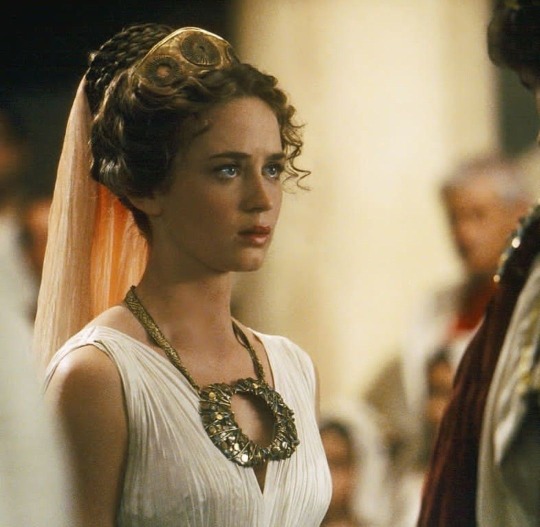
💧liv tyler (ardra surya): upper photo
💧emily blunt (ardra chandra): lower photo
🌧 ardra is the first rahu-ruled nakshatra. in order to better understand the nature of ardra, we need to take a step back and understand the previous nakshatra—mrigashira. mrigashira was the rejection of the garden of ignorance and the freedom to move on. in ardra, we see the process of forming the rational mind and free will. due to the intellectual nature of rudra, we see ardra natives preferring to study, understand, and learn about the physical world/plane. this often leads to a fascination with the physical plane and understanding the workings of everything that peaks their interest. with the mercurial energy of gemini (knowledge) and rahuvian influence of the vimshottari system (materialism and illusion), we can see the reasoning of ardra’s prevelance in dystopian, horror, and sci-fi films. this nakshatra’s fixation on understanding the world and finding freedom is the perfect combination for creating films with dark subject matter. rudra’s intentionally destructive nature also provides ardra natives with a niche ability to accumulate knowledge to understand the workings of the world and destroy what seems to not be fit. precisely how rudra represents the emotional release and purification that occurs after the storms of the plane or mind cease (more on this later!). this is similar to most character development in many horror/sci-fi films and the ever present devil/savior trope. if you’re interested in further looking into this dichotomy, i recommend “the exorcist” starring linda blair (ardra chandra), “bedazzled” staring elizabeth hurley (ardra lagna), and “supernatural” starring mark pellegrino (ardra lagna). this trope is also perfectly illustrated by lana del rey’s (ardra surya) music. in her earlier albums, “born to die”, “paradise”, and “ultraviolence”, the singer describes her natural love of the darker things in life (i.e. drugs, violence, guns). as her albums progress, we see her slowly become more aware of the dangers of her lifestyle and her slowly moving towards love and kindness instead—much like rudra’s symbolism of calming after the tumultuous storms of life. i highly recommend listening to her music to gain an understanding of ardra’s themes!
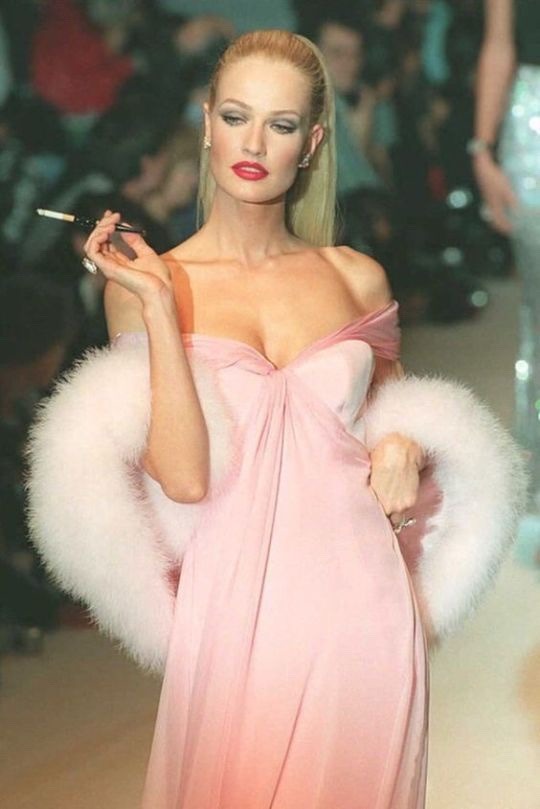

💧karen mulder (ardra surya): left photo
💧victoria beckham (adra lagna): right photo
🦮 ardra is heavily associated with animals. it is symbolized by the female dog yoni. this is indicative of ardra’s devotional, emotional, and knowledgeable nature. rudra is the ruler of this nakshatra. rudra desired to become “the lord of the animals”. this nakshatra also has the same animalistic dominion desire of uttara phalguni and revati. this is because the yonis of all three nakshatras are the female dog (ardra), female cow (uttara phalguni), and female elephant (revati). this may be indicative of the motherly, animalistic nature of all three nakshatras. this is also why all three nakshatras get along so well. the animalistic nature of ardra is why we see hundreds of ardra natives in animal prints, fur or leather, or animal symbolism via graphic tees or headbands; similar to the reoccurring cow print in uttara phalguni fashion!


💧vienna skye (ardra surya): upper photo
💧ariana grande (ardra surya): lower photo
🍀 another reoccuring style theme for ardra was the appreciation of 60s fashion, particularly the mod era of the 60s. time and time again, when doing my research for this post, i saw a multitude of ardra natives dress up/try to emulate 60s fashion. ardra natives such as ariana grande’s (ardra surya) 60s-inspired fashion in her most recent music videos (i.e. “34+35”) and chrissy tiegan’s (ardra lagna) multiple 60s themed events. i believe this behavior is due to rahu’s extreme prevalence in old hollywood and the 1960s’ modeling industry. for example, hedy lamarr (ardra lagna) was a prominent actress and inventor, jean shrimpton (swati surya) was an icon of swinging london and very popular model in the 60s, and pat cleveland (ardra surya) was a very well-known model who was the muse of every prominent fashion house in paris. i believe ardra natives try to emulate this era of fashion because of ardra’s appreciation of all things old and vintage, which appears to the nature of many of the rahuvian and ketuvian individuals. an additional thing to note is the prevalence of the color green in the ardra nakshatra. in hindu/vedic astrology, a particular type of color is dedicated to a certain nakshatra in which is lucky for the natives of the nakshatra to wear. green, being the color that symbolizes the fresh, succulent nature of rudra, is why the ardra natives shown above, vienna skye and ariana grande, are both wearing the color green. this also correlates to how many ardra natives have dyed their hair green shades or hues, i.e. gwen stefani (ardra chandra), nicole richie (ardra chandra), and rapper saweetie (ardra surya).
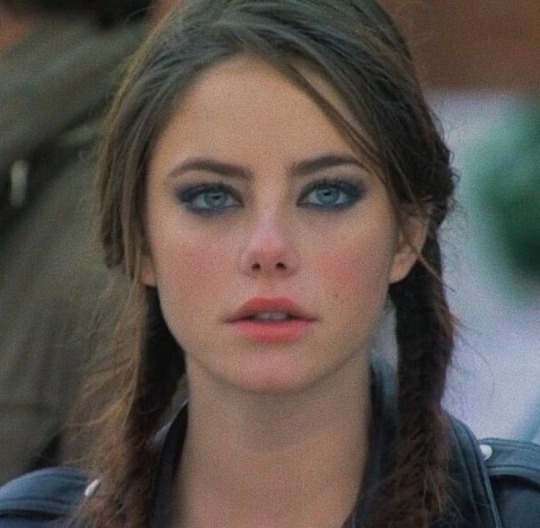
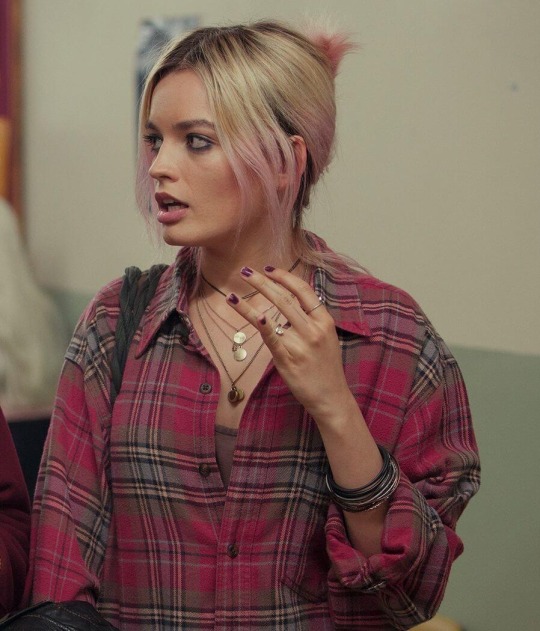
💧kaya scodelario (ardra chandra): upper photo
💧emma mackey (ardra chandra): lower photo
🎸 all nodal nakshatras tend to have a propensity for darker elements and themes in the media. this can be reflected in ardra’s love for grungy, smoky makeup; darker clothing; and vampy, vintage hair and fashion looks (much like the magha nakshatra). this darker aesthetic was also heavily popular in the 90s/2000s. most notably, lizzy caplan (ardra surya), who played janis ian in “mean girls”, her character was well known for her liking of punk subculture, heavy eye makeup, and band merchandise, a trait that was also common with the characters played by ardra natives: kaya scodelario (ardra chandra) in “skins” and emma mackey (ardra chandra) in “sex education”. this behavior is prevalent in the ketu and rahu natives because it reflects the smoky and tamasic nature of both shadow planets. by rejecting the more popular, mainstream trends for the purpose of embracing more expressive and alternative movements (such as grunge, punk, rock, alternative, etc.). this why we see the nodal nakshatras so prominent in those subculture musical genres (i.e. ardra natives kurt cobain of “nirvana” and jimmy page of “led zeppelin”).
as always, i am open to any constructive criticism! i tried to touch on both the appearance, fashion and nature of ardra and i hope i did well! this post took me forever to make and i truly tried to put so much effort into it! i just adore ardra’s emotional, purposefully destructive, raw and feminine energy its natives tend to reflect 🌩 if you are looking for more information about ardra, get to know the overrulers and supreme deities of rahu, durga (the goddess of power) and the serpent god, and mercury, vishnu (the maintainer) and narayana (the cosmic person)!! if any of my placements or information is incorrect please feel free to let me know! also, i am fully aware of the origins of vedic astrology and if i was in anyway disrespectful to hindu culture, i will take down this post immediately xx
* all of these placements were found using astrotheme/.com and/or astro-charts/.com. it is important to note that some chandra (moon) placements may be off by up to 6 degrees and lagnas (risings) as well, due to the fact that many websites do not have a 100% accurate birth time for the given celebrities.
* i take no credit for the invention of vedic astrology-based appearance profiles. please watch claire nakti on youtube or look into @/cn0bles, @/lovejustlied, @/dh4nishta, and @/vanillemercure on twitter for more in-depth analysis on vedic astrology xx
#vedicastrology#gemini#ardra nakshatra#nakshatras#mercury planet#maya#gemini moon#budha#north node#rahu ketu#gemini aesthetic#grunge#60s aesthetic#astrology#astro notes
686 notes
·
View notes
Text
This is the definition of a trivial problem, but I walked pass this game at a store a while ago:

And it legit bugs me that they chose such an 80s design scheme for it. This particular kind of graphic design was really only big at the very, very beginning of the 90s, and it was kind of already getting dated a couple years into the decade, never mind that it would have been about as modern as a leisure suit by 1999.
Looking further, I typed 90s Graphic Design into google image search and most of the early results look like this?
Do people really not know the difference between the 80s and the 90s? We just going to pretend that grunge and MTV never existed?
I know graphic and product design that looked like this continued into the 90s but that was before a bunch of alternative stuff swept it away.
Is this some weird Mandela effect thing and I just hallucinated a whole decade of design? The 90s didn’t look like Pee-Wee’s Playhouse, for Chrissake! The 90s (And I’m talking about the pop culture archetype, not the one or two years where things did still kind of did look like Pee Wee’s playhouse)
They looked like this:
youtube
Or this:
youtube
And this:
youtube
And this
youtube
I’m kind of stuck because I’m not a graphic design guy, and Google appears to believe that 90s graphic design looked like the Saved By The Bell opening credits or the original Transormers packaging, so I just grabbed some 90s ad campaigns and tv show stuff I remembered.
But pay attention to the color schemes and typeface choices, and note that even in the early 90s we were pretty much only seeing Magenta at weddings and funerals, and while we still went out with Cyan once and a while, we were starting to realize it was best to just break up and get it over with.
Anyway, I find it weirdly bugs me because the 90s are a nostalgic time for me, and even more interestingly, it’s really when the kind of remix/nostalgia culture that puts boxes that look like that on 2020 shelves really became a major cultural force, but I don’t feel like I see many references to the Gen X/Slacker/eXtreme/logos with different sized letters/liquid television/Clasky-Csupo/all the fashions on Blossom/floral prints and subdued colors/Image Comics/black trench coats and katanas/Pogs/badly dubbed ultraviolent anime OVAs/Tamagotchi/Grunge music kind of moment.
It seems like people kind of leap directly from cyan and magenta fanny packs to Linkin Park and Evanescence nostalgia, and the stuff in between feels weirdly forgotten.
52 notes
·
View notes
Photo

Oliver Stone’s ‘Natural Born Killers’ Is, More than Ever, the Spectacle of Our Time
Yet it has never gained true respectability.
Variety
|
Owen Gleiberman
“ Works of art that were once radical tend to find their cozy place in the cultural ecosystem. It’s almost funny to think that an audience ever booed “The Rite of Spring,” or that the Sex Pistols shocked people to their souls, or that museum patrons once stood in front of Jackson Pollock’s splatter paintings or Warhol’s soup cans and said, “But is it art?” In 1971, “A Clockwork Orange” was a scandal, but it quickly came to be thought of as a Kubrick classic.
Yet “Natural Born Killers,” a brazenly radical movie when it was first released, on August 26, 1994, has never lost its sting of audacity. It’s still dangerous, crazy-sick, luridly hypnotic, ripped from the id, and visionary. I loved the movie from the moment I saw it. It haunted me for weeks afterward, and over the next few years I saw it over and over again (probably 40 times), obsessed with the experience of it, the terrible lurching beauty of it, the spellbinding truth of it. It’s a film that has never left my system.
I’ve met a number of people who feel the way I do about “Natural Born Killers,” but I’ve also run across a great many people who don’t. The reaction has always been split between those I would call “Natural Born Killers” believers (they included, at the time, such influential critics as Roger Ebert and Stanley Kauffmann) and those who thumb their noses at what they consider to be an over-the-top spectacle of Oliver Stone “indulgence.” At the time of its release, it was said that the film was bombastic, gonzo for its own sake, pretentious as hell, and — of course — too violent. Too flippantly violent. In a way, “Natural Born Killers” was the “Moulin Rouge!” of shotgun-lovers-on-the-lam thrillers. Either you got onto its stylized high wire, its deliberate pornography of operatic overkill, or you thought it was trash.
The divide has never been resolved, and the movie has never gained true respectability. Which I think is a good thing. Some works of art need to remain outside the official system of canonical reverence. But if you go back and watch “Natural Born Killers” today, long after all the ’90s-version-of-film-Twitter chatter about it has faded, what you’ll see (or, at least, what I hope you’ll see) is that the movie summons a unique power that descends from the grandeur of its theme. Far more than, say, “The Matrix,” “Natural Born Killers” was the movie that glimpsed the looking glass we were passing through, the new psycho-metaphysical space we were living inside — the roller-coaster of images and advertisements, of entertainment and illusion, of demons that come up through fantasy and morph into daydreams, of vicarious violence that bleeds into real violence.
I’ve always found “Natural Born Killers” a nearly impossible movie to nail down in writing (it’s like trying to capture what music sounds like). Sure, it’s easy to summarize the tale of Mickey Knox (Woody Harrelson), a sloe-eyed drawling psycho in a blond ponytail, and his ragingly damaged bad-apple lover, Mallory (Juliette Lewis), the two of whom go on a killing spree that turns them into celebrities, like Bonnie and Clyde for the age of TMZ.
Yet it’s the moment-to-moment, shot-to-shot texture of the movie that transforms a two-dimensional story into a four-dimensional sensory X-ray. I took my best shot at writing about it in my 2016 memoir, “Movie Freak,” in which I said:
“The tingly audacity of ‘Natural Born Killers,’ and the addictive pleasure of watching it, begins with the perception that Mickey and Mallory experience not just their infamy but every moment of their lives as pop culture. Their lives are poured through the images they carry around in their heads. The two of them enact a heightened version of a world in which identity is increasingly becoming a murky, bundled fusion of true life and media fantasy. It works something like this: You are what you watch, which is what you want to be, which is what you think you are, which is what you really can be (yes, you can!), as long as you…believe.”
What form does this kind of belief take? It’s a word that applies, in equal measure, to the fan-geek hordes at Comic-Con; to the gun geeks who imagine themselves part of a larger “militia”; to the gamers and the dark-web conspiracy junkies; to the people who think that Donald Trump was qualified to be president because he pretended to be an imperious executive on TV. It applies to anyone who experiences the news as the world’s greatest reality show, or to the way that social media is called social media because it’s about people treating every facet of their lives as “media” — as a verité performance. Made just before the rise of the Internet, “Natural Born Killers” captured, and predicted, a society that turns reality itself into a nonstop channel surf, a simulacrum of the life we’re living. One of the film’s most brilliant sequences is a dystopian sitcom, with a vile fulminating Rodney Dangerfield, that depicts Mallory’s hellish home. It’s a dysfunctional nightmare reduced to TV, which is what allows Mallory to murder her way out of it.
“Natural Born Killers” took off from a script by Quentin Tarantino that got drastically rewritten (Tarantino received a story credit), though it provided the basic spine of the film’s evil-hipsters-on-the-run structure and kicky satirical ultraviolence. But there’s a reason that Tarantino didn’t like the finished film; it’s not, in the end, his sensibility. His vision is suffused with irony, whereas Oliver Stone directs “Natural Born Killers” as if he were making a documentary about a homicidal acid trip.
The patchwork of film stocks that Stone employs (black-and-white, glaring color, 8mm, grainy video) turns the movie into a volcanic multimedia dream-poem. And it’s no coincidence that those clashing visual textures are an elaboration of the style that Stone invented for “JFK,” a drama about political reality (the assassination of a president) that gets sucked into the vortex of media reality (the now-you-see-it-now-you-don’t mesmerization of the Zapruder film). “Natural Born Killers” pushes that dynamic several steps further, as Mickey and Mallory’s murder spree becomes a hall of mirrors that’s being televised inside their own heads. In 1967, the tagline for “Bonnie and Clyde” was “They’re young. They’re in love. And they kill people.” The tagline for “Natural Born Killers” should have been: “They kill people. So they’ll have something to watch.”
“Natural Born Killers” captures how our parasitical relationship to pop culture can magnify the cycle of violence. Yet that theme may be more dangerous now than it was in 1994. As a liberal who’s a staunch advocate of every gun-control measure conceivable, and would never think to “blame” a mass shooting on a piece of entertainment, I am nevertheless haunted by the possibility that half a century’s worth of insanely violent pop culture has had a collective numbing effect. In “Natural Born Killers,” a psychiatrist, played with diligent dryness by the comedian Steven Wright, gets interviewed on television about Mickey and Mallory, and his analysis is as follows: “Mickey and Mallory know the difference between right and wrong. They just don’t give a damn.”
That, to me, is one of the most resonant lines in all of movies, because what it’s describing now sounds chillingly close to too many of us. Sure, we all say that we care. But if you look at the actions, the judgments, the policies supported by millions of Americans, it seems increasingly clear that we’re turning into a society of people who know the difference between right and wrong, but just don’t give a damn.
Or maybe that’s too dark a thing to say. But the beauty, and brilliance, of “Natural Born Killers,” which draws on and radicalizes a tradition of movies (“Bonnie and Clyde,” “Badlands,” “Taxi Driver”) that deposit the audience directly into the souls of sociopaths, is that the film dares to ask us to ask ourselves what we’re made of. To ask whether we’ve removed life from reality by turning it into a spectacle of nonstop self-projection. To ask whether we’re now watching ourselves to death. “
-- I loved it when I saw it. I saw it once. It scared me. It was too real and too predictive, too foretelling. But brilliant. Scary brilliant. To see the parody of the sitcom is to live your present life, your past life, and realize a subtle and not so subtle horror coursing through our filtered vision every day.
23 notes
·
View notes
Text
Smokey brand Select: Vast and Infinite
I’ve done a few of these Smokey brand Selects, lists of some of my favorite films in any specific sub-genre, and it occurs to me that I haven’t even touched my actual, favorite, sub-genre at all. A few of these movies have made different lists, sure, but I've never cobbled together an actual, dedicated, catalog for the Cyberpunk category. I absolutely adore these types of film. They capture every aspect I look for in a flick; Beautiful imagery, enthralling sounds, compelling narrative, existential questions, and so much more. The sheer depth of this genre lends itself to great storytelling, diverse creativity, and enthralling visuals. I love Cyberpunk and these films are some of the best I've seen.
10b. Johnny Mnemonic

Johnny Mnemonic is probably the purest, US made, Cyberpunk film I have ever seen. It’s not a great watch, there’s a ton going on all of the time, but it is bursting with creativity and ideas. I adore this film, I really do. Even with all of it’s confusing, spastic, scatter-brained, story telling, I loved this film. Up until The Matrix and then John Wick, Johnny was my favorite Keanu Reeves performance. That, alone, has me coming back year after year. I highly recommend checking this one out if your a fan of the genre but it’s probably the weakest select on this list by a wide berth.
10a. Virtuosity
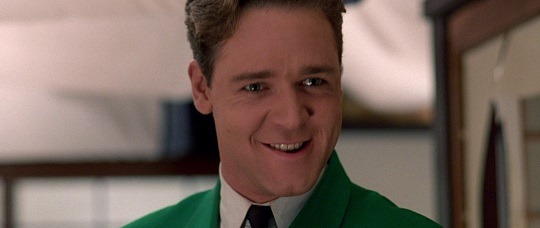
I was hesitant to put this one on the list because, I mean, this makes it eleven instead of ten, but moreso because I wasn’t sure of this thing qualifies as Cyberpunk. There’s a couple ahead on this list that have the same issue but I ended up putting them on so I guess this goes on here, too. Plus, I never hear anyone talking about this thing and I feel it deserves a bit more of a spotlight. Virtuosity is a goddamn blast. There’s a great performance from Denzel Washington a trite but ably executed plot, and some pretty interesting choices from a relatively new director. The strongest draw, however, is Russell Crowe as the artificial, glass eating, super psychopath, SID 6.7, as well as all of that mid 90s, virtual reality, conjecture. Virtuosity is definitely a product of it’s time but it's still a great time to watch.
9. Tron: Legacy
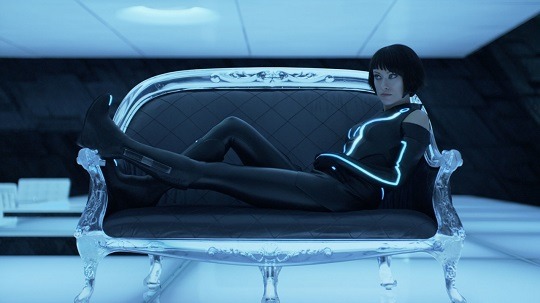
Legacy is, admittedly, not the best film. Even so, i had a ball with this one. The soundtrack by Daft Punk, alone, is worth the price of admission but couple that with the stunning, neon, visuals and you have a combo that can move even the most stoic of moviegoers. I absolutely adore this film. It get way too much hate for what it is. I’m a little perturbed we’ll never see the capping to this narrative but, for a second outing, I really did enjoy returning to this world. I’d put the first on this list but I really did connect with it beyond how dope it looked. Legacy gave me so much more to dig my teeth into and I respect it for that.
8. 12 Monkeys
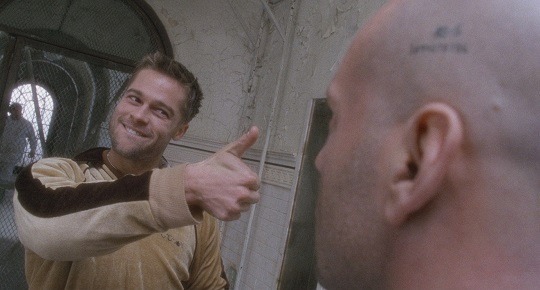
I don’t even know where to begin with this movie. I’ve seen it a few times and dissected it in a couple of essays for school but I'm still not sure if i understand it wholeheartedly and that is incredible. For a movie to keep me so off-balance and I still enjoy the show is testament to the brilliant direction on display. The plot, itself, as convoluted as it can be sometimes, is rather gripping once you get a handle on what’s going on and the performances are outstanding. Brad Pitt really shows his range in this one, shades of things to come. 12 Monkeys is a Cyberpunk on the strictest sense but, like The Matrix, I was hesitant to add it tho this list. But, also just like The Matrix, if it is truly a Cyberpunk film, it has to be required viewing.
7. Dredd

Dredd is entirely Cyberpunk. From page to screen, Cyberpunk everything. The first outing was a little too campy to make this list but the second? The Karl Urban Dredd? That one fits this list perfectly. It’s a crying shame we didn’t get a sequel. I was itching to see Judge Death do it’s thing but the siege of Peachtree was more than enough to sate my ultraviolent appetite. Seriously, this movie is outstanding and it’s a crime more people didn’t see it. I feel like if this thing was released today, maybe on VOD, it would get the respect it deserves. Too early to the party, it seems.
6. RoboCop

It’s crazy to me that all of the classic, US made, Cyberpunk movies are all championed by foreign directors. Ridley Scott, Denis Villeneuve, Terry Gilliam, and Paul Verhoeven. Verhoeven’s RoboCop is a scathing indigent of consumerism and it’s interchangeability with corruption. When I was a kid, that sh*t flew right over my head. All I saw was a dope cyborg named Murphy and a beautifully alien war machine called ED-209. As I got older, I learned to appreciate, more and more, Verhoeven’s vision and RoboCop became more than just an action film for me. This thing is one of the best in the sub-genre and far more intelligent than anyone gives it credit for being.
5. The Matrix
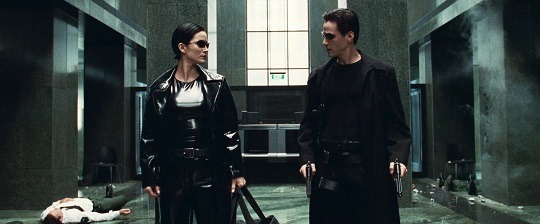
I don’t know if The Matrix belongs on this list. It never felt Cyberpunk to me but everyone else tells me it is. When I think about it, it checks all the boxes; Existentialism, robots, future dystopia, etc. All the boxes but I always felt it skewed more toward Neo Noir than anything. That said, if it is Cyberpunk, and it seems that is the accepted consensus, how can it not make this list? The Matrix is one of the most influential films ever made. It’s easily the greatest action film in history. Terminator 2 is usually the front runner for that title, I’ll eventually make a Select for action films so don’t worry, but Neo’s maiden voyage matches anything Cameron created.
4. Alita: Battle Angel
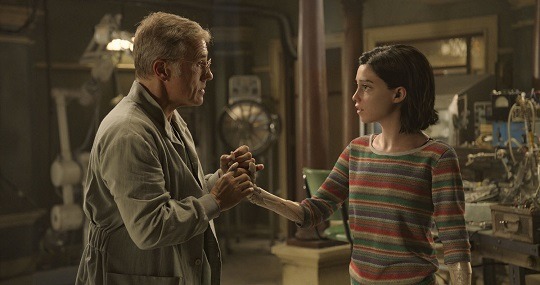
I was initially introduced to Alita way back in the early 90s. the SyFy channel, back then know as the Sci-Fi Channel, used to show these blocks of what was called “Japanimation”, later known properly as anime, and the original Alita OVA was one of the few that aired. I loved every bit of it. It got me wondering about the manga so i went looking for that, too. Imagine my surprise when it was hundreds of chapters deep and encapsulated an entire world. I was hooked. So was James Cameron because he optioned it for the big budget, US, blockbuster treatment and spent the next decade and change, adapting technology to bring Gally and her universe to life. What we eventually got was, hands down, the best adapted anime or manga to the big screen, ever. Alita: Battle Angel is an incredible film experience that deserves more eyes on it and more love. Here’s hoping HBO Max and ATT give it that sequel everyone wants because it gets real awesome after the rollerball arc we just witnessed. Plus, I mean, Rosa Salazar’s Alita is just f*cking adorable, man.
3. Akira
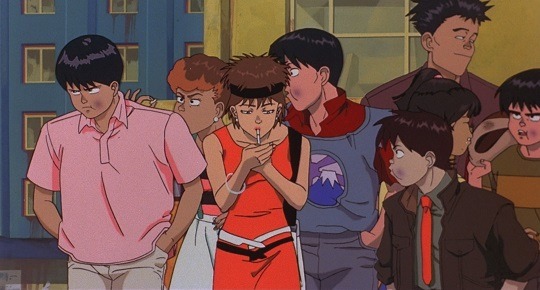
Akira was the first anime I really watched with intent and that viewing colored my perception of cinema going forward for the rest of my life. I had seen anime before, of course, but not like this. Macross and Go-Lion were serials, cartoons for kids, but Akira was a completely different animal. I didn’t understand the narrative as a child, that came later, but i knew the experience was revolutionary. As I watched this film over and over, year after year, I began to understand exactly the story being told in a critical nature. It wasn’t only the breathtaking visuals that held up. Akira is as influential as it is because of it’s absolutely pristine storytelling. It’s reputation is unassailable and if you count yourself a fan of cinema, you have to see it at least once. I am petrified at what America is going to do to this narrative, man.
2. Ghost in the Shell
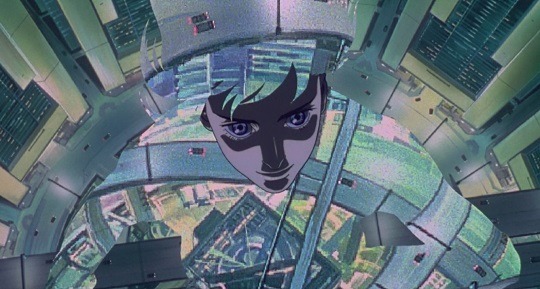
Ghost is easily the most balanced Cyberpunk film i have ever seen. It’s what I measure all movies in the sub-genre against. The narrative is poignant, profound, and perfectly executed. For the record, I’m speaking about the 1995 anime, not whatever the f*ck ScarJo starred in a few years back. That sh*t was the worst but Oshii’s masterpiece? That sh*t is the best. For such a short stint in Masamune Shirow‘s world, you are immersed in the grit of it all immediately. Kusanagi’s story, her struggle with being and conflict, mirror each other brilliantly. This would be top of the list if not for how much the world, itself, resembles our own. The Cyberpunk aesthetic kind of eludes this most Cyberpunk narrative. Even that juxtaposition is a positive in my eyes.
1. Blade Runner 2049
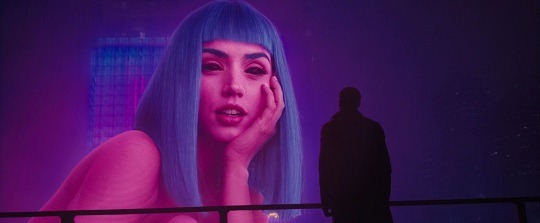
This one was hard to place. I love the original Blade Runner to bits. I think it’s a masterwork of cinema. It’s deftly acted, brilliantly directed, and easily one of the most gorgeous films I have ever laid eyes upon. And then Denis Villeneuve drops his continuation. Everything i just said about the original, stands for it’s sequel, but maybe even more. 2049 is breathtakingly gorgeous. It tells a simple, yet, emotional story driven by outstanding performances from everyone. No one is bad in this at all. I enjoyed the characters as much as I enjoyed the first’s, absolutely falling in love with Joi and Luv. This movie is everything and doesn’t get the love it deserves. Admittedly, it can be a little long in the tooth, but it needs all of that time to tell it’s story. If you commit to the narrative, engage with the visuals, and accept what the film is offering, you will be absolutely rewarded with one of the best movies ever captured on film.
Honorable Mentions: Terminator, Appleseed Alpha, Hotel Artemis, Run Lola Run, Demolition Man, Black Magic M-66, Elysium, Upgrade, The Lawnmower Man, Dark City, Armitage III, Ready Player One, The Zero Theorem, Minority Report, Looper
5 notes
·
View notes
Text
Our parasitical relationship to pop
I’ve always found “Natural Born Killers” a nearly impossible movie to nail down in writing (it’s like trying to capture what music sounds like). Sure, it’s easy to summarize the tale of Mickey Knox (Woody Harrelson), a sloe-eyed drawling psycho in a blond ponytail, and his ragingly damaged bad-apple lover, Mallory (Juliette Lewis), the two of whom go on a killing spree that turns them into celebrities, like Bonnie and Clyde for the age of TMZ.
Yet it’s the moment-to-moment, shot-to-shot texture of the movie that transforms a two-dimensional story into a four-dimensional sensory X-ray. I took my best shot at writing about it in my 2016 memoir, “Movie Freak,” in which I said:
“The tingly audacity of ‘Natural Born Killers,’ and the addictive pleasure of watching it, begins with the perception that Mickey and Mallory experience not just their infamy but every moment of their lives as pop culture. Their lives are poured through the images they carry around in their heads. The two of them enact a heightened version of a world in which identity is increasingly becoming a murky, bundled fusion of true life and media fantasy. It works something like this: You are what you watch, which is what you want to be, which is what you think you are, which is what you really can be (yes, you can!), as long as you…believe.”
What form does this kind of belief take? It’s a word that applies, in equal measure, to the fan-geek hordes at Comic-Con; to the gun geeks who imagine themselves part of a larger “militia”; to the gamers and the dark-web conspiracy junkies; to the people who think that Donald Trump was qualified to be president because he pretended to be an imperious executive on TV. It applies to anyone who experiences the news as the world’s greatest reality show, or to the way that social media is called social media because it’s about people treating every facet of their lives as “media” — as a verité performance. Made just before the rise of the Internet, “Natural Born Killers” captured, and predicted, a society that turns reality itself into a nonstop channel surf, a simulacrum of the life we’re living. One of the film’s most brilliant sequences is a dystopian sitcom, with a vile fulminating Rodney Dangerfield, that depicts Mallory’s hellish home. It’s a dysfunctional nightmare reduced to TV, which is what allows Mallory to murder her way out of it.
“Natural Born Killers” took off from a script by Quentin Tarantino that got drastically rewritten (Tarantino received a story credit), though it provided the basic spine of the film’s evil-hipsters-on-the-run structure and kicky satirical ultraviolence. But there’s a reason that Tarantino didn’t like the finished film; it’s not, in the end, his sensibility. His vision is suffused with irony, whereas Oliver Stone directs “Natural Born Killers” as if he were making a documentary about a homicidal acid trip.
The patchwork of film stocks that Stone employs (black-and-white, glaring color, 8mm, grainy video) turns the movie into a volcanic multimedia dream-poem. And it’s no coincidence that those clashing visual textures are an elaboration of the style that Stone invented for “JFK,” a drama about political reality (the assassination of a president) that gets sucked into the vortex of media reality (the now-you-see-it-now-you-don’t mesmerization of the Zapruder film). “Natural Born Killers” pushes that dynamic several steps further, as Mickey and Mallory’s murder spree becomes a hall of mirrors that’s being televised inside their own heads. In 1967, the tagline for “Bonnie and Clyde” was “They’re young. They’re in love. And they kill people.” The tagline for “Natural Born Killers” should have been: “They kill people. So they’ll have something to watch.”
“Natural Born Killers” captures how our parasitical relationship to pop culture can magnify the cycle of violence. Yet that theme may be more dangerous now than it was in 1994. As a liberal who’s a staunch advocate of every gun-control measure conceivable, and would never think to “blame” a mass shooting on a piece of entertainment, I am nevertheless haunted by the possibility that half a century’s worth of insanely violent pop culture has had a collective numbing effect. In “Natural Born Killers,” a psychiatrist, played with diligent dryness by the comedian Steven Wright, gets interviewed on television about Mickey and Mallory, and his analysis is as follows: “Mickey and Mallory know the difference between right and wrong. They just don’t give a damn.”
That, to me, is one of the most resonant lines in all of movies, because what it’s describing now sounds chillingly close to too many of us. Sure, we all say that we care. But if you look at the actions, the judgments, the policies supported by millions of Americans, it seems increasingly clear that we’re turning into a society of people who know the difference between right and wrong, but just don’t give a damn.
Or maybe that’s too dark a thing to say. But the beauty, and brilliance, of “Natural Born Killers,” which draws on and radicalizes a tradition of movies (“Bonnie and Clyde,” “Badlands,” “Taxi Driver”) that deposit the audience directly into the souls of sociopaths, is that the film dares to ask us to ask ourselves what we’re made of. To ask whether we’ve removed life from reality by turning it into a spectacle of nonstop self-projection. To ask whether we’re now watching ourselves to death.
-Owen Gleiberman, “Twenty-Five Years Later, Oliver Stone’s ‘Natural Born Killers’ Is, More than Ever, the Spectacle of Our Time,” Variety, Aug 25 2019 [x]
7 notes
·
View notes
Text
Tarung Sarung: The Karate Kid of Jakarta
https://ift.tt/eA8V8J
Cobra Kai season 3 is the first major streaming hit for Netflix in 2021. With each of the 10 episodes having running time of around a half hour, it makes for a quick binge overall. Dedicated fans inhaled the show in the first weekend and craved more.
Unfortunately, Netflix carries only one other film from the original Karate Kid franchise and it’s the outlier. The Next Karate Kid was Pat Morita’s final appearance as the venerable Mr. Miyagi. The film also introduces two-time Oscar winner Hilary Swank in her first lead role as Julie Pierce. However, The Next Karate Kid was a flop. Morita is the only connection to the three previous films and despite Swank’s impressive breakout performance, Julie fails to carry the chemistry that Daniel-san (Ralph Macchio) had with Miyagi.
So where on Netflix can fans get their next Karate Kid fix? How about Indonesia?
Netflix exclusively released Tarung Sarung on New Year’s Eve, one day prior to the Cobra Kai season 3 premiere. The movie was originally slated for Indonesian theatrical release in April 2020, but it was postponed due to the global pandemic like so many other films last year. Tarung Sarung is a loving homage to The Karate Kid. It follows the story of Daniel and Miyagi, with some regional twists. Deni Ruso (Panji Zoni) is Daniel. Get it? Deni Ruso is Daniel LaRusso.
Daniel-san versus Deni Ruso
Just like Jackie Chan and Jaden Smith’s redux of The Karate Kid, Tarung Sarung mirrors the major plot points of the original but includes many deviations beyond being set in a different country. Instead of being a poor kid from New Jersey, Deni is among the entitled rich, the heir to the third richest family in the country that runs Ruso Corp, a major capitalist development firm. However, he’s a spoiled bully who flaunts his wealth and abuses his position.
As punishment, his mom, Dina Ruso (Imelda Therinne), the family matriarch, sends him away to Makassar. Deni is stripped of his bodyguard and no longer has access to his credit card, but is given two bumbling assistants played by an Indonesian comedy team, Gogo (Doyok SuperDJ) and Tutu (Jarot SuperDJ). The excuse is that Deni is supposed to oversee the controversial Ruso Corp development project to convert a local beach to an amusement park. There on the beach, Deni meets a local gal named Tenri (Maizura). Upon seeing that she is protesting the Ruso Corp development, he hides his identity for a prince and the pauper subplot. Tenri invites Deni to a beach party, and from there, The Karate Kid takes over.
Deni meets Tenri on that beach and is confronted by Tenri’s suitor, Sanrego (Cemal Faruk), who is the local sarong fighting champion. Tenri is Ali (Elizabeth Shue) – both with an ‘I’. Sanrego is Johnny (William Zabka). Sanrego is also the name of an Indonesian herb used for male fertility and this character has clearly overdosed on it as he constantly harasses Deni.
Tarung Sarung means ‘sarong fighting.’ A sarung – or as it is more commonly spelled ‘sarong’ – is a traditional piece of fabric worn wrapped around the body in much of southern Asia and parts of Africa. The style used in this film takes the shape of a cloth tube that is folded and worn like a kilt for men. Tarung Sarung depicts a unique form of one-on-one dueling where two combatants step into a single tubular sarong together and beat the crap out of each other. It’s not the ‘Karate’ Kid. It’s the Sarong Kid.
From there, references to The Karate Kid come fast and furious. Deni goes on to get revenge on Sanrego, but not by hosing him down while he tries to roll a joint. Nevertheless, it’s still in a bathroom – an outdoor platform over a pond used as an outhouse. As Sanrego goes to relieve himself, Deni kicks down the platform causing him to plunge into a cesspool pond.
After that, Sanrego’s thugs chase Deni and beat him again, but he is rescued by Pak Khalid Rewa (Yayan Ruhian), who trains him in the esoteric ways of sarong fighting. Instead of wax on wax off, its mosquito catching, water carrying, and sandal rearranging. There’s even ‘balance on the bow of the canoe’ training just like Daniel did.
What’s more, Deni makes a blatant nod when he spies some original posters for The Karate Kid at Tenri’s home. She tells him it was her favorite film, and Deni asks if Jackie Chan was in it. Tenri retorts by asking how a movie called The Karate Kid could be about Kung Fu (For the record, Jackie’s redux was retitled Kung Fu Dream in China). Ultimately, Sanrego and Deni agree to settle their differences at the titular Tarung Sarung tournament, which is where the finale fight takes place. However, the tournament goes a little farther off the deep end than Daniel’s crane kick win.
From Star Wars to John Wick
For fans of the martial arts genre, keen eyes will have dialed into the actor cast in the Miyagi role. Yayan Ruhian has been a leading martial arts star since Indonesian cinema caught global attention with The Raid: Redemption. This cult classic, along with the sequel The Raid 2, put Indonesia on the map when it came to brutal sanguineous martial arts mayhem. It earned Ruhian a cameo as Tasu Leech in Star Wars: The Force Awakens.
More recently, he brought the fight to John Wick: Chapter 3 – Parabellum as Shinobi #2. Ruhian is a genuine master of the martial art of Pencak Silat and it shows. He moves with a lethal grace that can only be achieved by an authentic master.
Indonesia is the 4th most populous nation in the world, and their indigenous cinema has been steadily growing for years, mostly in the wake of The Raid. But for most westerners, it’s just getting onto their radar. Ever the cinematic avant garde when it comes to global distribution, Netflix has been bringing over a fair amount of Indonesian content lately. The production values on most Indonesian films are good and Indonesia makes for some intrinsically interesting and colorful backdrops. The Makassar village setting of Tarung Sarung is bursting with seaside color and local charm. However, many Indonesian film plots are derivative of Chinese, Japanese, and Korean cinema. When Tarung Sarung steals an entire script from Hollywood – ‘80s Hollywood at that – you know they aren’t above poaching stories.
Where Indonesian cinema really shines is martial arts films. The Raid films introduced a stable of hardcore martial actors including Iko Uwais, Joe Taslim, Cecep Arif Rahman, and Julie Estelle. These masters have been steadily increasing their influence on action movies.
Uwais and Rahman were also in The Force Awakens and Rahman was in Parabellum. As the protagonist in The Raid, Uwais has made the most progress with lead roles in Stuber, Mile 22, and the Netflix original series Wu Assassins. He will also appear as the “Hard Master’ in the upcoming Snake Eyes: G.I. Joe Origins.
Taslim appeared in Fast & Furious 6 and Star Trek Beyond, along with a key role in the Cinemax original series Warrior. He’s cast as Sub-Zero in the upcoming redux of Mortal Kombat.
Rahman and Estelle have remained mostly in Indonesia. Rahman is spearheading the convergence of an indigenous superhero comic series to film. The first installment was Gundala. And the next chapter, Satria Dewa: Gatotkaca, also stars Ruhian.
Estelle is the only one who learned martial arts for movie roles (the others fell into acting after being successful martial arts champions and teachers). She’s more of a scream queen having starred in several Indonesian horror films like The Chanting trilogy, Macabre, and the martial arts infused The Night Comes For Us. Indonesian martial arts films have been the cutting edge of ultraviolence for the last decade with visceral and complex fight choreography and these actors have led the charge.
Indonesian Pride
The most engaging aspect of Tarung Sarung is its Indonesian perspective. There are a lot of moral lessons that engage issues of environmentalism, class separation, capitalism, and Islam. Sarong fighting is portrayed as a duel of honor, one-on-one, not like the gang fights in the big city.
With Ruhian’s influence, it is based on Pencak Silat, which is an umbrella term for a wide range of martial art styles from across South Asia. Here it is intimately connected to Islam. Khalid is a religious leader of a mosque, and just like Shaolin monks espouse Buddhism, Khalid’s martial lessons are intertwined with Islamic wisdom.
As Khalid teaches, he preaches, and his sagacious words are accompanied by a soundtrack of Islamic chants. Even Tenri contributes lessons in Islam. Tenri wears a hijab, and in one scene, she defends her tradition to Deni, who claims to be an atheist. When Deni is first presented with Islam, he regards them all as terrorists, but soon learns otherwise. Deni’s martial epiphany isn’t a crane kick. It comes from his faith.
Tarung Sarung takes some liberties in stating that sarong fighting will be included in the 2024 Paris Olympics. It’s complete fiction – sarong fighting isn’t even in consideration. Ironically, the next new martial Olympic event will be Karate. Karate was slated to be included at the postponed 2020 Tokyo Olympics, which will hopefully be held this summer. Nevertheless, with the Olympic fabrication, Tarung Sarung teases a sequel.
The Karate Kid is a tough act to follow. Even Jackie Chan and Jaden Smith with a $40 million budget could not eclipse the popularity of the original. Tarung Sarung falls short too. The fight choreography is mediocre, but then so was the choreography in The Karate Kid. Yayan is solid in his scenes but he doesn’t fight nearly enough.
Despite its shortcomings, Tarung Sarung offers a nice slice of Indonesian life and Muslim philosophy. But with a nearly two hour running time, that might not be enough to sustain it for newbies to the Indonesian cinema. Nevertheless, it stands as a testament to the universal appeal of The Karate Kid. And if you really need a Cobra Kai fix, Tarung Sarung is a dose of some Karate Kid methadone.
cnx.cmd.push(function() { cnx({ playerId: "106e33c0-3911-473c-b599-b1426db57530", }).render("0270c398a82f44f49c23c16122516796"); });
Tarung Sarung is currently available on Netflix.
The post Tarung Sarung: The Karate Kid of Jakarta appeared first on Den of Geek.
from Den of Geek https://ift.tt/39elOS9
1 note
·
View note
Text
Smokey brand Select: Vast and Infinite
I’ve done a few of these Smokey brand Selects, lists of some of my favorite films in any specific sub-genre, and it occurs to me that I haven’t even touched my actual, favorite, sub-genre at all. A few of these movies have made different lists, sure, but I've never cobbled together an actual, dedicated, catalog for the Cyberpunk category. I absolutely adore these types of film. They capture every aspect I look for in a flick; Beautiful imagery, enthralling sounds, compelling narrative, existential questions, and so much more. The sheer depth of this genre lends itself to great storytelling, diverse creativity, and enthralling visuals. I love Cyberpunk and these films are some of the best I've seen.
10b. Johnny Mnemonic

Johnny Mnemonic is probably the purest, US made, Cyberpunk film I have ever seen. It’s not a great watch, there’s a ton going on all of the time, but it is bursting with creativity and ideas. I adore this film, I really do. Even with all of it’s confusing, spastic, scatter-brained, story telling, I loved this film. Up until The Matrix and then John Wick, Johnny was my favorite Keanu Reeves performance. That, alone, has me coming back year after year. I highly recommend checking this one out if your a fan of the genre but it’s probably the weakest select on this list by a wide berth.
10a. Virtuosity
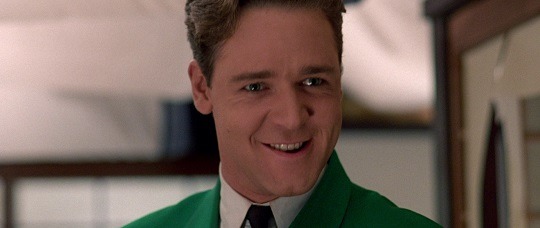
I was hesitant to put this one on the list because, I mean, this makes it eleven instead of ten, but moreso because I wasn’t sure of this thing qualifies as Cyberpunk. There’s a couple ahead on this list that have the same issue but I ended up putting them on so I guess this goes on here, too. Plus, I never hear anyone talking about this thing and I feel it deserves a bit more of a spotlight. Virtuosity is a goddamn blast. There’s a great performance from Denzel Washington a trite but ably executed plot, and some pretty interesting choices from a relatively new director. The strongest draw, however, is Russell Crowe as the artificial, glass eating, super psychopath, SID 6.7, as well as all of that mid 90s, virtual reality, conjecture. Virtuosity is definitely a product of it’s time but it's still a great time to watch.
9. Tron: Legacy
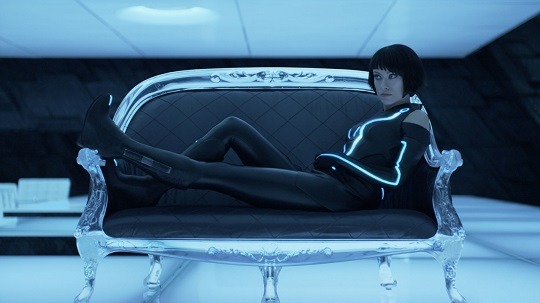
Legacy is, admittedly, not the best film. Even so, i had a ball with this one. The soundtrack by Daft Punk, alone, is worth the price of admission but couple that with the stunning, neon, visuals and you have a combo that can move even the most stoic of moviegoers. I absolutely adore this film. It get way too much hate for what it is. I’m a little perturbed we’ll never see the capping to this narrative but, for a second outing, I really did enjoy returning to this world. I’d put the first on this list but I really did connect with it beyond how dope it looked. Legacy gave me so much more to dig my teeth into and I respect it for that.
8. 12 Monkeys
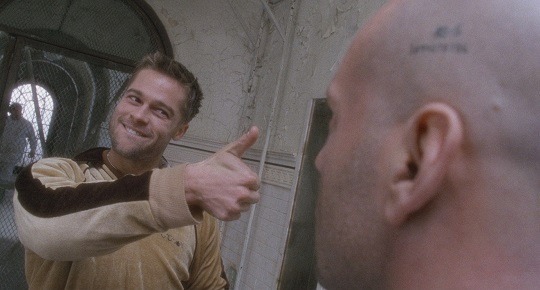
I don’t even know where to begin with this movie. I’ve seen it a few times and dissected it in a couple of essays for school but I'm still not sure if i understand it wholeheartedly and that is incredible. For a movie to keep me so off-balance and I still enjoy the show is testament to the brilliant direction on display. The plot, itself, as convoluted as it can be sometimes, is rather gripping once you get a handle on what’s going on and the performances are outstanding. Brad Pitt really shows his range in this one, shades of things to come. 12 Monkeys is a Cyberpunk on the strictest sense but, like The Matrix, I was hesitant to add it tho this list. But, also just like The Matrix, if it is truly a Cyberpunk film, it has to be required viewing.
7. Dredd

Dredd is entirely Cyberpunk. From page to screen, Cyberpunk everything. The first outing was a little too campy to make this list but the second? The Karl Urban Dredd? That one fits this list perfectly. It’s a crying shame we didn’t get a sequel. I was itching to see Judge Death do it’s thing but the siege of Peachtree was more than enough to sate my ultraviolent appetite. Seriously, this movie is outstanding and it’s a crime more people didn’t see it. I feel like if this thing was released today, maybe on VOD, it would get the respect it deserves. Too early to the party, it seems.
6. RoboCop
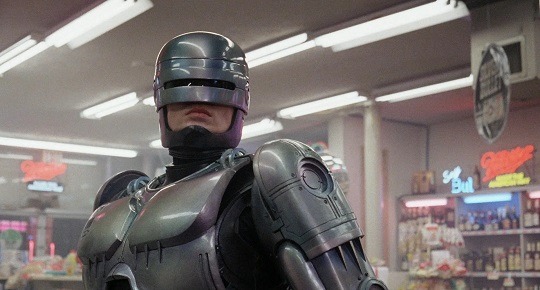
It’s crazy to me that all of the classic, US made, Cyberpunk movies are all championed by foreign directors. Ridley Scott, Denis Villeneuve, Terry Gilliam, and Paul Verhoeven. Verhoeven’s RoboCop is a scathing indigent of consumerism and it’s interchangeability with corruption. When I was a kid, that sh*t flew right over my head. All I saw was a dope cyborg named Murphy and a beautifully alien war machine called ED-209. As I got older, I learned to appreciate, more and more, Verhoeven’s vision and RoboCop became more than just an action film for me. This thing is one of the best in the sub-genre and far more intelligent than anyone gives it credit for being.
5. The Matrix

I don’t know if The Matrix belongs on this list. It never felt Cyberpunk to me but everyone else tells me it is. When I think about it, it checks all the boxes; Existentialism, robots, future dystopia, etc. All the boxes but I always felt it skewed more toward Neo Noir than anything. That said, if it is Cyberpunk, and it seems that is the accepted consensus, how can it not make this list? The Matrix is one of the most influential films ever made. It’s easily the greatest action film in history. Terminator 2 is usually the front runner for that title, I’ll eventually make a Select for action films so don’t worry, but Neo’s maiden voyage matches anything Cameron created.
4. Alita: Battle Angel
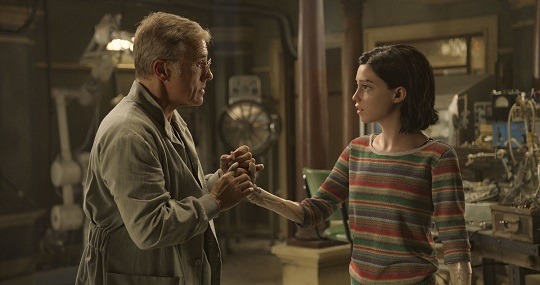
I was initially introduced to Alita way back in the early 90s. the SyFy channel, back then know as the Sci-Fi Channel, used to show these blocks of what was called “Japanimation”, later known properly as anime, and the original Alita OVA was one of the few that aired. I loved every bit of it. It got me wondering about the manga so i went looking for that, too. Imagine my surprise when it was hundreds of chapters deep and encapsulated an entire world. I was hooked. So was James Cameron because he optioned it for the big budget, US, blockbuster treatment and spent the next decade and change, adapting technology to bring Gally and her universe to life. What we eventually got was, hands down, the best adapted anime or manga to the big screen, ever. Alita: Battle Angel is an incredible film experience that deserves more eyes on it and more love. Here’s hoping HBO Max and ATT give it that sequel everyone wants because it gets real awesome after the rollerball arc we just witnessed. Plus, I mean, Rosa Salazar’s Alita is just f*cking adorable, man.
3. Akira

Akira was the first anime I really watched with intent and that viewing colored my perception of cinema going forward for the rest of my life. I had seen anime before, of course, but not like this. Macross and Go-Lion were serials, cartoons for kids, but Akira was a completely different animal. I didn’t understand the narrative as a child, that came later, but i knew the experience was revolutionary. As I watched this film over and over, year after year, I began to understand exactly the story being told in a critical nature. It wasn’t only the breathtaking visuals that held up. Akira is as influential as it is because of it’s absolutely pristine storytelling. It’s reputation is unassailable and if you count yourself a fan of cinema, you have to see it at least once. I am petrified at what America is going to do to this narrative, man.
2. Ghost in the Shell
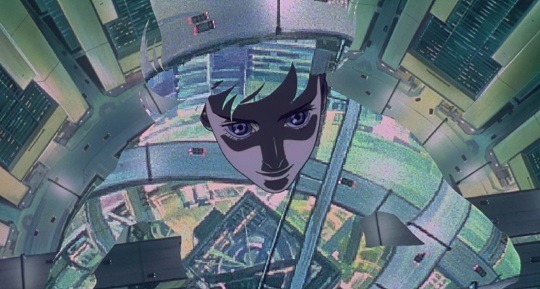
Ghost is easily the most balanced Cyberpunk film i have ever seen. It’s what I measure all movies in the sub-genre against. The narrative is poignant, profound, and perfectly executed. For the record, I’m speaking about the 1995 anime, not whatever the f*ck ScarJo starred in a few years back. That sh*t was the worst but Oshii’s masterpiece? That sh*t is the best. For such a short stint in Masamune Shirow‘s world, you are immersed in the grit of it all immediately. Kusanagi’s story, her struggle with being and conflict, mirror each other brilliantly. This would be top of the list if not for how much the world, itself, resembles our own. The Cyberpunk aesthetic kind of eludes this most Cyberpunk narrative. Even that juxtaposition is a positive in my eyes.
1. Blade Runner 2049
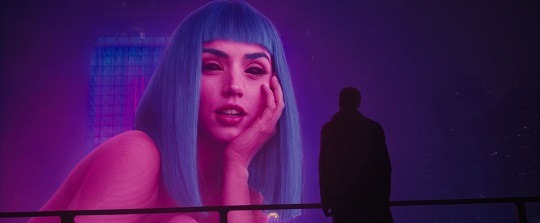
This one was hard to place. I love the original Blade Runner to bits. I think it’s a masterwork of cinema. It’s deftly acted, brilliantly directed, and easily one of the most gorgeous films I have ever laid eyes upon. And then Denis Villeneuve drops his continuation. Everything i just said about the original, stands for it’s sequel, but maybe even more. 2049 is breathtakingly gorgeous. It tells a simple, yet, emotional story driven by outstanding performances from everyone. No one is bad in this at all. I enjoyed the characters as much as I enjoyed the first’s, absolutely falling in love with Joi and Luv. This movie is everything and doesn’t get the love it deserves. Admittedly, it can be a little long in the tooth, but it needs all of that time to tell it’s story. If you commit to the narrative, engage with the visuals, and accept what the film is offering, you will be absolutely rewarded with one of the best movies ever captured on film.
Honorable Mentions: Terminator, Appleseed Alpha, Hotel Artemis, Run Lola Run, Demolition Man, Black Magic M-66, Elysium, Upgrade, The Lawnmower Man, Dark City, Armitage III, Ready Player One, The Zero Theorem, Minority Report, Looper
0 notes
Photo

I finally got around to finishing the bun versions of JohnSims Ultraviolence hair. Both flower and plain versions. Recolored in WildlyMiniatureSandwich’s naturals and unnaturals. Added as additional swatches. All the headbands come in white but these work with this hair to change the colors.
Download - Meshes needed here
Credits
@john-sims for the hair, @wildlyminiaturesandwich for the colors
208 notes
·
View notes
Text








Frederik Zøllner (avatars 400x640)
#frederik zøllner avatars#avatars#rpg ressources#400x640#avatars 400x640#frederik zøllner#request#credit : andthereisawoman (textures + typo)#credit : skatevibes and ultraviolence (coloring)
9 notes
·
View notes
Text
BMG: Annihilation (2017)
Tonight On Netflix: Editor’s Pick
If there’s one thing Hollywood has learned over the past ten years, it’s that audiences will watch almost anything if it’s based on a preexisting franchise.
Case in point: Marvel Studios’ long awaited follow up to the original Blue Man Group film–which grossed an estimated $1-billion at the box office (note: 93% of revenue came from Uzbekistan, where the Blue Man Group are the biggest thing since sliced bread. Sub-note: sliced bread was first introduced in Uzbekistan in 2016 and is still quite big).
Set during the chaotic aftermath of Blue Man Group: Origins, this ultraviolent R-rated sequel follows the heavily painted performance art collective as they impale and brutally dismember the evil intergalactic army of General Beige with the power of synchronized drumming and the unbridled tossing of colored paint–all without uttering a single word.
And if that wasn’t enough, they also play homemade instruments made from PVC piping!
Stick around after the end credits for a bonus scene featuring Nick Fury slowly eating a pastrami sandwich.
Starring Ryan Gosling as Blue Man #1, Edward James Olmos as Blue Man #2, Vanessa Redgraves as Blue Man #3 and douchebag magician Chris Angel as Chris Angel playing Blue Man #4. Directed by Blue Man #5 (Ridley Scott).
0 notes
Text
Honor Play UltraViolent Color Variant With 4GB RAM, 64GB Storage Launched in India
Huawei’s sub-brand Honor announced Honor Play, the company’s affordable gaming-centric smartphone in a new Ultra Violet color variant in India on October 1st, 2018. the company had earlier launched the device only in Midnight Black and Navy Blue colors variants in the country. The Honor Play UltraViolet Color variant will be available only in 4GB RAM and 64GB storage configuration.
View On WordPress
0 notes
Text
Everything, Everything (2017) Movie Review
Checkout Everything, Everything (2017) Movie Review on http://xxi.online/everything-everything-2017-movie-review/
Everything, Everything (2017) Movie Review
MOVIE REVIEW
Maddy Whittier is almost 18.
But she’s never been outside.
Well, not that she can remember, anyway. The last time she breathed unfiltered outside air, she was a very sick infant.
Maddy tells us that she’s got a rare, potentially fatal condition known as SCID: Severe Combined Immunodeficiency. Her immune system is basically nonexistent. Which means the house where she lives with her diligent, vigilant, competent mother—who’s a medical doctor herself—is hermetically sealed from the outside world. The front door is a sci-fi style air lock. Maddy’s clothes—all white, as if symbolizing the sterilized world she lives in—are irradiated with ultraviolent light to sterilize them.
Maddy’s assessment of her isolated life? “I feel like an astronaut trapped in space,” she says. “Every day is exactly the same.”
And so it is: surfing the internet, reading, exercising, talking with her kind nurse of 15 years, Carla. It’s not that Maddy’s life is bad, per se. It’s just that the outside world she dreams of experiencing is forever off limits to her.
It’s an existence Maddy’s mostly made peace with. Until, that is, the day heshows up.
Olly Bright is Maddy’s new next door neighbor. And as fate would have it, Olly’s bedroom window is right across from hers—essentially making it impossible for the pair of dangerously curious teens to ignore each other.
Olly writes his cell phone number on his window. Texting ensues. And sharing. Lots of sharing. Favorites (book, word, color, vice, person). Stories (she’s sick and her dad and brother died in a car accident after she was born; his dad can’t ever keep a job long). And, of course, feelings: “You’re beautiful,” Olly soon tells her.
Uh oh.
Maddy and Olly’s budding relationship takes a quantum leap forward when Maddy coaxes Carla into letting the boy into the house to actually talk to her. They’ll have to stay on opposite sides of the room, of course. But at least they can have a real face-to-face conversation.
Maddy promises she’ll be good.
But we all know that lovestruck teens aren’t always reliable when it comes to keeping promises. Especially when they reach the risky conclusion that experiencing life, even if only for a brief time, is more important than actually staying alive.
[Note: Spoilers are contained in the sections below.]
POSITIVE ELEMENTS
To his credit, Olly is never the one pushing to get closer, physically speaking, to Maddy. He’s respectful and concerned, and even when Maddy decides to kiss him, Olly’s hesitant and unsure whether it’s OK.
In some ways, Pauline is a conscientious, caring and sacrificial parent in her tenacious attempts to protect her daughter from anything that could make her sick.
SPIRITUAL CONTENT
Maddy says, “The universe took my dad and brother from my mom.”
SEXUAL CONTENT
Maddy wears form-fitting tops—T-shirts, tank tops, camisoles—for virtually the entire movie. We also see her in a cleavage-revealing swimming suit.
Maddy and Olly eventually close all that distance between them, kissing passionately a number of times. At Maddy’s plotting instigation, they head off to Hawaii together on what feels in many ways like an idyllic honeymoon … except, of course, that they’re unmarried teens. They share a day swimming, cuddling and kissing in the ocean, and return to the bungalow they’ve booked.
Olly seems awkwardly willing to sleep on “his side of the bed,” and, to his credit, doesn’t immediately press for more physical intimacy. But when Maddy lifts her hair to reveal the zipper on her dress, it’s a clear indicator that she’s willing to “share” the bed. Accordingly, we see Olly unzip Maddy’s dress, followed by close-ups of the couple’s ecstatic embrace in bed (bare shoulders are seen) which make it clear that they’re consummating their relationship.
VIOLENT CONTENT
Olly and his father have a volatile relationship. In one scene, they trade blows to the face with their fists, prompting Maddy to run outside to see if Olly’s OK.
CRUDE OR PROFANE LANGUAGE
We hear one use each of the s-word and “h—.” God’s name is misused once.
DRUG AND ALCOHOL CONTENT
At one point early on, Olly sits on his bedroom window pane with what looks to be an alcoholic beverage and an unnamed plastic bottle of prescription medication.
OTHER NEGATIVE ELEMENTS
Maddy lies repeatedly to her mother, hiding her relationship with Olly. Carla participates in the cover-up as well—earning her termination when Maddy’s mom eventually figures out what’s been going on.
Pauline forbids Maddy from ever seeing Olly again, re-emphasizing that doing so could cost Maddy her life. Maddy, however, decides the risk is worth it. So much so that she gets a credit card online, books tickets to Hawaii for her and Olly, and lies to him about being in remission to get him to say yes to going there with her.
That said, the biggest deception in the film isn’t Maddy’s. The teen ends up sick and hospitalized in Hawaii before her mom brings her home. A follow-up conversation between Maddy and her doctor from Hawaii reveals that Maddy doesn’t have SCID, a fact that Maddy confirms by rifling through the records her mother has carefully kept.
Maddy then angrily confronts her mother regarding the deception, and her mom tries to justify it by describing how scared she was to lose Maddy (who, admittedly, was very sick as a baby) after already losing her husband and son. Though the film ends with the suggestion that Maddy might one day forgive Pauline for depriving her of her entire childhood because of her mom’s obsessive, selfish fears, that reconciliation doesn’t happen by the time the credits roll.
CONCLUSION
Maddy Whittier’s sad, sick plight is a deeply sympathetic one. After all, what viewer wouldn’t adore a spunky, beautiful, curious, intelligent teen who simply wants a taste of what the world’s all about?
But therein lies the root of this film’s substantial philosophical problem: Everything, Everything invites us to root for and to romanticize a teen’s decision to potentially risk her life for a taste of freedom. And that particular taste involves a lot more than just, say, venturing down to the beach in Southern California where she lives. Instead, Maddy clandestinely obtains a credit card, buys tickets to Hawaii and jets off with the boy next door who soon becomes her lover.
And the problems don’t stop there. The film further rationalizes Maddy’s potentially disastrous choices by suggesting that apart from her rebellious risk—and rebellious, romantic or not, is exactly what it is—she never would have learned that her supposed condition was actually the imaginative concoction of her obsessive, overprotective mother. So not only are there no negative consequences for Maddy’s risky choices, she’s rewarded for them.
There might, ironically, be a good cautionary message here for anxiety-riddled helicopter parents. But as a parent myself, I couldn’t help but feel aghast at the way Everything, Everything glorifies an admittedly adorable teen girl’s increasingly reckless choices.
0 notes
Photo

I have John-SIms Ultraviolence hair, recolored in WildlyMiniatureSandwich’s naturals and unnaturals. Added as additional swatches. Separate files. Just the plain versions for now, bun versions will come later. All the headbands are white but my accessory overlay headbands for the Vampire crown hair work with these.
Download - Meshes needed here
New previews thanks to @neverloore 💕💕
Credits @john-sims for the hairs, @wildlyminiaturesandwich for the colors
239 notes
·
View notes
Photo


I wanted to be able to change the accessory colors without needing more swatches for the hairs. Accessory Overlays for the vampires flower crown hair and basegame woven braid. Both are split into two accessory pieces to be able to mix and match. They are lip ring left and lip ring right for each set. All recolored in WildlyMiniatureSandwich’s neutrals and unnaturals. Custom thumbnails this time :) (I also added thumbnails to the other accessory overlays I uploaded before) They will work with some CC hairs. Basically ones that use the parts without moving the UV mapping for it. @john-sims Ultraviolence hair worked with the vampire headband when I checked.
Separate files for neutrals and unnaturals. Separate files for each piece. Basegame compatible.
Download
Vampire Flower Crown Overlays
Basegame Braid Woven Overlays
Credits
EA for the textures, @wildlyminiaturesandwich for the colors
348 notes
·
View notes